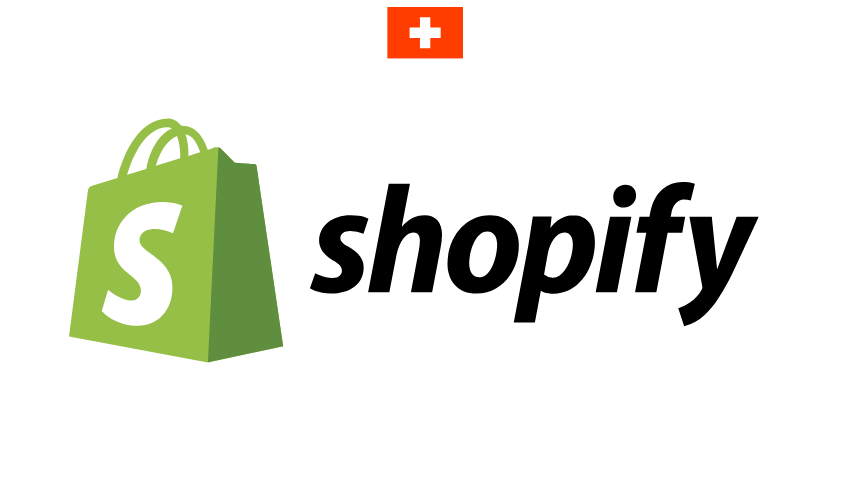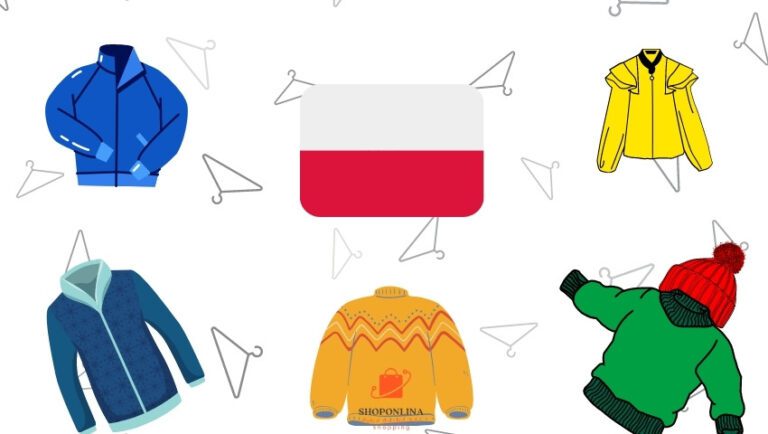Shopify Switzerland … How to open an online store in Switzerland 2023

Table of Contents
Do you wish to sell real things on the internet in Switzerland? Shopify Switzerland is one of the best possibilities available. And creating an account is shockingly simple.
Shopify enables e-commerce businesses to easily sell their products online. In this article we are going to go through all the important details with you.

Why open an online store in Switzerland?
Switzerland is an excellent location for launching an internet company. This is one of Europe’s largest marketplaces.
Switzerland’s products and enterprises enjoy a strong reputation both in Switzerland and across the globe. When a product claims it was created in Switzerland, most people don’t question the quality since they know it will be of high quality.
They are worried about their ability to afford it, not because they do not feel the product is excellent value for money, but because they recognise that high-quality commodities, such as Swiss products, should be priced correspondingly.
If you have a good reputation, you may leverage it to attract consumers who are more concerned with quality than anything else while still meeting your quality requirements.
As vital as it is to have a good reputation with people all around the globe, it may be a mistake to ignore the Swiss market.
Many Swiss speak English, yet the majority of Swiss individuals look for internet goods and services in their native language.
It’s a good idea to put up a Swiss version of your website and online shop so you can create trust with your local customers.
When you have an online shop, you can sell from it to any country in the world. It is fairly simple to trade with other EU nations.
You may also learn how to sell to the United States, Canada, and any other nation in the globe if you want to.
With your services, you may deliver things all over the globe or reach individuals in every nation. This will instantly provide you access to billions of people who will become prospective consumers. This will enable you to sell more and earn more money.
How to open a Shopify Switzerland store?
Before you start constructing your Shopify Switzerland shop, you must first define your goals. See if you can answer some basic questions about your store.
If you do this, you will be able to concentrate your attention and accelerate the process of setting things up.
You may also want to consider which pricing structure is best for you. However, you are not required to choose a plan until the conclusion of your 14-day free trial.
Decide what type of store you will establish
It is simpler to develop a Shopify Switzerland shop by finding clients who have a specific interest and selling them things that appeal to them than it is to attempt to offer a vast selection of generic products.
Choosing a speciality will also provide you a defined starting point and make building a strong brand easier. Filling a market gap or need is an excellent business concept.
Select a Name for Your Store
It is crucial to choose a company name, but don’t spend too much time on it. Consider a simple and obvious example.
The Shopify Business Name Generator is a useful tool for naming an online shop. People who wish to name their ecommerce business after a certain word or phrase are free to do so. The tool then suggests ways for people to utilise it. Then you just navigate through the possibilities and choose the name you want for your company.
Make a list of at least ten to fifteen brand names. Check to see if the name you choose isn’t already trademarked and if you can acquire a.com address for it.
If you want your website to show up in the search engines, you should use a dot com address. Most professional brands use this web address as well.
Shopify has a service called Domain Name Registration that may help you find available.com domains. You may also examine how much a domain costs and purchase and set one up for your store.
When you have a business website, your online store name shows up on every page. The name of your legal business is on your Shopify bill.
Steps:
- From your Shopify account, click on Settings.
- Click on the store details link to find out more.
- When you get to the Basic information section, click Edit.
- Enter the name of your online store and your legitimate business name, then click Save.
Open a Shopify Account
Those who wish to open a new Shopify Switzerland shop should begin with this step. You don’t have to do anything else to get started with Shopify. All you have to do is create an account.
Go to the Shopify site and click the Start free trial button. Fill in the email address, password, and store name that you want to use for your store.
Remember that you must come up with a unique name for your shop or Shopify will not allow you to purchase the domain.
After that, you’ll be asked a series of questions about your company and your personal details.
Once you’ve filled in all the information, Shopify will send you to the admin panel. Now you can start setting up your store.
Choose and Personalize Your Shopify Theme
First, think about what your online store will look like and get started on it! Fortunately, Shopify has a lot of free and paid themes in its Themes store.
After you’ve chosen a theme for your online store, you may customise it to reflect your personal brand. You may use the theme editor in your Shopify admin to update the content and settings of your theme all in one location.
In the theme editor, there is a theme preview as well as a sidebar or menu where you may make changes to your theme settings.
If you wish to save money, free themes will suffice. You may modify the fonts, colours, carousel slides, and your logo with a free theme. You may also add or delete stuff, modify it, and relocate it.
Although free themes are excellent, premium themes may also be really tempting. A professional theme will have more possibilities, so if you need to fine-tune the appearance of your website, you should spend a little more money on a professional theme.
Optimize Your Store’s Settings
To get your Shopify Switzerland shop up and running, you’ll need to make a few changes. In the bottom left corner of your Shopify page, click the ‘Settings’ button with the gear symbol.
Before you do anything else, go to “General” and fill in all the information about your store. Then, set up the payment.
Set Up Payments
Using Shopify Payments is a terrific idea no matter where you reside. It enables you to accept a wide range of payment methods, including credit cards, Google Pay, Shopify Pay, PayPal, and others. It is simple to sign up with Shopify Payments. You may do this by providing Shopify with your company and personal details, as well as product and bank account information.
Set up Checkout
On Shopify, you can also see and edit your checkout settings. As a new business owner, it is recommended that you make customer accounts optional so that customers may check out as guests.
Make the Policies you Need
Shopify includes features that make it simple to write standard terms and conditions, privacy policies, and return policies. To get an example of each policy, go to Shopify Settings > Legal > scroll down to Refund > Privacy > Terms of Service > Shipping statements.
Offer Free Shipping
If you want to open an online business, it is critical that you provide free delivery on your products. In your Shopify account, you may make this the default setting.
Remember that if you want to make money after paying the shipping costs, you’ll have to add this into the price of your items. Moreover, if you are still new to the market you would probably benefit from shopify dropshipping Switzerland to save you the hassle of stocking products.
Delete all “Domestic” shipping zones from the Shopify Settings > Shipping section.
When you are done, click “Add shipping zone.” If you’re giving free delivery, write that first, and then select “Rest of World” if you’re willing to ship to additional nations.
In the “Price-based rates,” click on “Add rate.” Then choose the “Free shipping rate.” As soon as everything is set up, click “Save.”
Set up a Tax System
As the owner of an e-commerce store, you have to charge your customers sales tax. Among the things that are good about Shopify Switzerland is that it automatically calculates taxes based on the current sales tax rates around the world.
Even Though, it’s a good idea to talk to a tax expert to make sure you’re trying to charge the appropriate taxes. If you live in a region where there are special tax rules for certain products, you can change the default tax settings.
Shopify users should go to Settings > Taxes to configure their zones. The default pricing may then be changed if specific criteria apply to your items or if you wish to. Remember that Shopify does not pay or submit your sales tax.
Create an Online Shop
Shopify allows you to sell your items in a variety of ways, including your online shop, Facebook store, brick and mortar store, and so on.
When you’re finished, you should create an online store. Go to Settings > Sales Channels in Shopify and add Online Store as a sales channel if it hasn’t previously been established.
Create Your Essential Pages
The next step is to add pages to your website. Contact, About Us, FAQs, and the Privacy Policy and Terms of Service are the most crucial. You should begin with them.
If your consumers need to contact you, your Contact page provides them with options. Your About us page, on the other hand, allows you to build a more personal interaction with your consumers. Your FAQ page should address the most frequently asked questions by your clientele.
If you wish to run Google advertisements, you must have a Privacy Policy page. After providing Shopify with your address and email, you may use their free policy generator to build a privacy policy.
Add Products
Next, after you’ve set up your store, you should start adding products to it. That’s a cinch.
To do that, go to the Products tab and select Add Products. Then you can add your products and list them.
Your product listings are among the most important aspects of your shop since they assist consumers decide whether or not to purchase anything. Examine some of the most well-known Shopify businesses in Switzerland to discover how they present their items on the home page.
After you list your products, you will also have to add some details about them, so keep that in mind. All of this helps your customers learn more about your products.
This is what you should pay attention to when you write product listings:
- Product title: The title of your product should make it apparent what you’re offering. Make it brief and use words that consumers would use while they’re searching.
- Product descriptions should clarify what your product can achieve and why people should use it. They should specify who the product is designed for and what buyers should be aware of before buying it.
Take the time to make sure that your product descriptions are clear to understand and quickly scan over. As a rule, short paragraphs are better than long ones. If you can, use bullet points whenever you can.
- Photos: When shoppers visit your website, one of the first things they will see are your product images. Remember to utilise high-resolution images that showcase your items in their finest light. This will benefit your company. After you’ve uploaded your photographs, you may edit and resize them as you see fit.
- Prices: The next step is to establish your pricing structure. It’s hard to figure out how much a product should cost, but if you don’t get it correctly the first time, you can always go back and change the price later.
You may organise your items by using various labels. Product availability, product kind, supplier, tags, and collections are some of the labels that are accessible. Use them to help you classify your items and make it easier for customers to locate what they want to buy.
Add Coupon Codes
You may offer your consumers a fixed-value, percentage-based, or shipping-only discount on your store’s goods, collections, or variants, among other things.
If you sell items online, you can provide buy X get Y discounts to get clients to buy more of your goods.
You can select the best from the following:
- how long the code is valid for
- the maximum number of times a code can be applied
- Before the code may be used, there must be a minimum order amount.
- What goods, collections, or versions are eligible for the discount?
Your customers may use discount coupons in your online business. Customers may utilise discount coupons in person if they purchase anything and receive something else for free if you use Shopify POS Switzerland. This excludes the “buy X, receive Y” promotion.
All Shopify plans come with discount codes. Afterward, you can use the Sales by discount report to see how often your discount codes are used.
Set Up Google Analytics
You must first establish a Google account, sign up for analytics monitoring, and pick what data you want to track before you can begin collecting data about your company.
Step 1: Check to see whether you already have Google Analytics activated.
Turn on Google Analytics just once to receive the most accurate statistics. For the first time, Google Analytics may be configured for your business. Go to Step 2 if you’re certain you haven’t done this previously.
If you are unsure if you have already enabled Google Analytics for your store, then follow these steps:
Go to your Shopify admin and click on Online store > Preferences from the menu.
Make sure the Google Analytics section just contains the phrase “Paste your Google Analytics code here” and is otherwise empty. If you see this, go to the next step of the procedure. If you see a code that starts with UA- instead, you’ve already enabled Google Analytics and may go to Step 4: Enable ecommerce tracking.
- Click on Themes.
- Select Actions > Edit code.
- In the Layout area, click [/] theme.liquid.
- Look for the following Google Analytics tracking tags in the theme.liquid file: ga.js, dc.js, gtag.js, or analytics.js. If you notice any of these tags in your theme.liquid file, you already have Google Analytics set up. You can now move on to Step 4: Turn on e-commerce tracking.
A Google Analytics tracking code isn’t shown on your Preferences page, and you don’t have one in your theme.liquid file, indicating that it isn’t activated on your shop. Step 2 is the following step. Get yourself a Gmail account.
Step 2: Register for a Google Account.
You must have a Google account to use Google Analytics. If you already use Google products such as Gmail or Ads, you may sign in to Google Analytics using your existing account.
If you do not already have a Google account, you must create one. You don’t need to utilise your Gmail account other than to log in and out of Google Analytics.
The next step is to set up an Analytics account. Once you have a Google account, do this. After you open an account, go to Step 3: Activate Google Analytics.
Step 3: Activate Google Analytics.
To activate Google Analytics, you must first establish a Universal Analytics property in Google and then add it to your Shopify store.
Steps:
- In a web browser, go to Google Analytics and sign in with your account.
- Select Admin.
- In the Account field, choose the correct account.
- Select Create Property from the Property column.
- Give the property a name.
- Only choose to create a Universal Analytics property.
- Then, click next.
- Select the right settings.
- Then click the Create button.
- Copy the Universal Analytics property to your clipboard
- In a new browser window, go to your Shopify admin.
- Navigate to Online Store > Preferences.
- Paste your Universal Analytics property into the Google Analytics account field in the Google Analytics section.
Continue to Step 4: Enable ecommerce tracking after you’ve enabled Google Analytics on your store.
Step 4: Enable ecommerce tracking.
You can use Google’s ecommerce tracking in two different ways:
If you only need transaction and revenue statistics, use basic ecommerce tracking.
If you want more information regarding visitor activity, use enhanced ecommerce tracking.
Enable basic ecommerce tracking Steps:
- Select Admin in your Google Analytics account.
- Select Ecommerce Settings from the View column.
- Change the Enable Ecommerce toggle from OFF to ON.
If you want more extensive tracking information, enable Enhanced Ecommerce tracking.
Enable enhanced ecommerce tracking.
Steps:
- Go to Online store > Preferences from your Shopify admin.
- Check Use Enhanced Ecommerce in the Google Analytics section. If you’re using an earlier version of Google Analytics, you may need to click Upgrade to the most recent version before you can tick the Use Enhanced Ecommerce option.
- Then, click Save. You can use this so that Shopify can keep track of and send all of your website’s data to Google Analytics.
- Click Admin on your Google Analytics account.
- Click Ecommerce Settings from the View column.
- Change the Enable Enhanced Ecommerce Reporting toggle from OFF to ON.
- Then, click Save.
Launch your store
At this point, you will have successfully set up your Shopify Switzerland shop, and it is ready to be launched and made accessible to the rest of the world.
To do so, go to Settings and then Preferences. At the bottom of the page, you’ll see a button to erase your password page. You are now prepared to go.
Market your store
Swiss Shopify stores also use Shopify to market themselves which enables them to do the following:
Attract the appropriate clients.
Determine your brand’s ideal customers and discover how to reach them using content marketing, SEO, and social media.
Promote your business.
Create internet marketing strategies to ensure that the proper people notice your store—past expertise is not required .
Enhance your efforts.
Reduce guesswork and incrementally enhance advertising. Track the effectiveness of your campaigns across all channels with marketing dashboard reports.
Establish long-term customer connections.
Take control of your customer relationships to encourage growth with powerful messages sent from a single platform.
- Create distinct customer segments
Using data obtained by your shop, create segments that group together essential, intriguing, or possibly valuable clients.
- Use Shopify Switzerland Email to convert your data into money.
The commerce-first email system assists you in targeting consumers and growing your business.
- Personalize and automate messages
Develop automated marketing flows in just a few clicks that interact with clients in the right way at the right time.
- Learn more about your clients.
Collect and manage your data securely in one place with Shopify Switzerland to connect with customers globally.
Choose A Paid Plan
Shopify offers fair prices and pricing alternatives to assist you in selecting one that suits your needs and budget.
If you’re not sure which pricing plan to choose, join up for a 14-day free trial to explore how Shopify’s features can help you sell your products and build your company. You can always upgrade your membership to add additional functions and features to your shop.
Learn how Shopify POS characteristics and Shopify hardware Switzerland may help your retail business if you want to sell in person.
They have three plans that meet all requirements, and they are as follows:
- Basic
This is the best option for beginner ecommerce businesses with periodic in-person sales. Price: USD $29 per month.
- Shopify
Best for developing businesses that sell online or in-store. Price: USD $79 per month.
- Advanced
It’s the best option for expanding businesses that need advanced reporting. Price: USD $299 per month.
Dropshipping Swizterland
Dropshipping is one of the finest methods to fill your Shopify shop; we’ve put together a comprehensive guide on the top suppliers for drop shipping in Switzerland so you can have the greatest store.
Wholesale products from Switzerland
Switzerland is one of the best countries for luxury commodities, having wholesale marketplaces that combine high quality with low prices. Switzerland wholesale clothes is among the finest available.
Online shopping in Switzerland
Switzerland is well-known throughout Europe for producing high-quality items, which is why we’ve assembled a complete guide to purchasing online from Switzerland .
Buying clothes from Switzerland online
Switzerland is well-known for having both high-quality and low-cost clothing, and you can locate the greatest and cheapest clothes in Switzerland in our guide.





